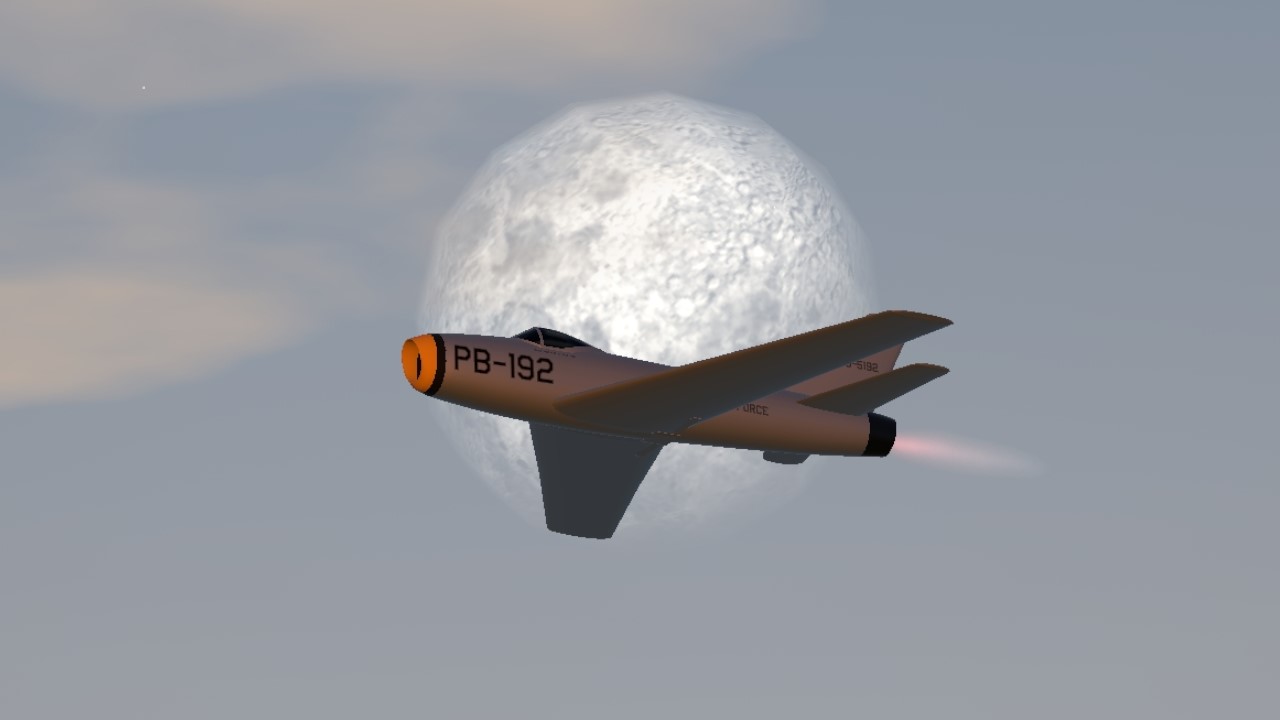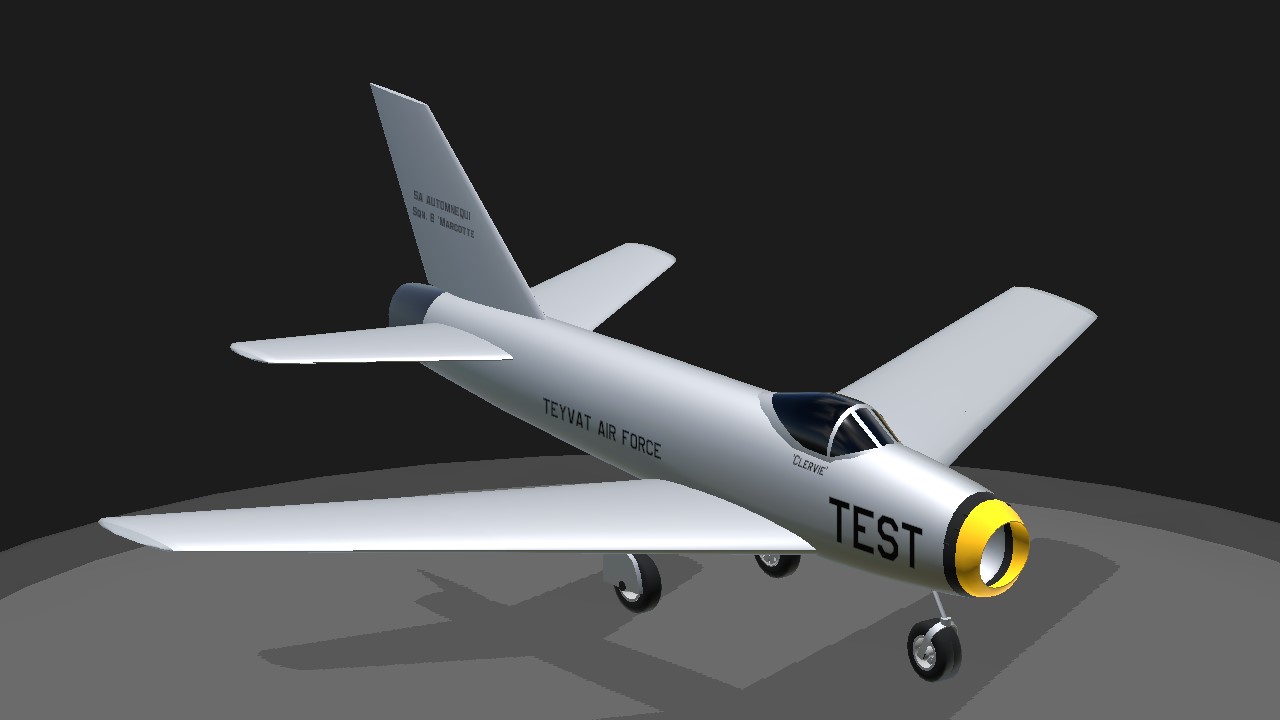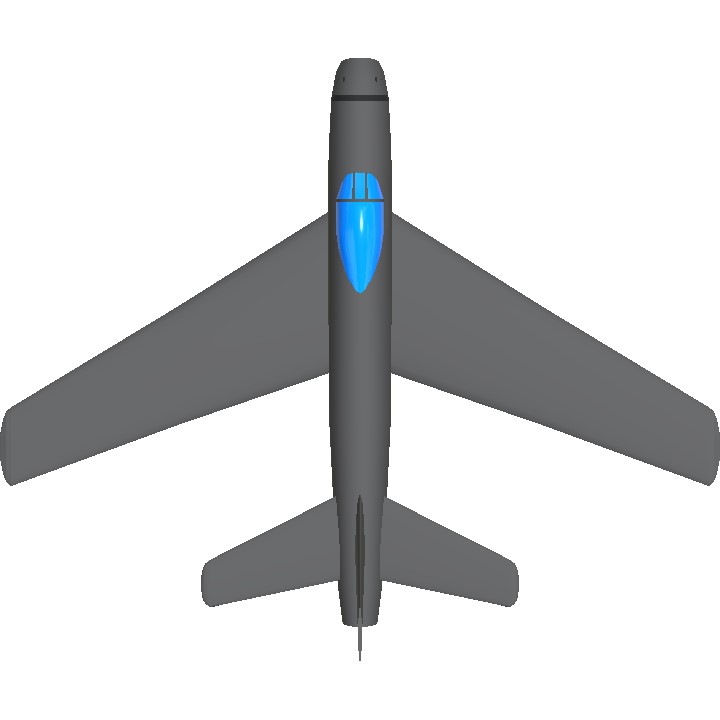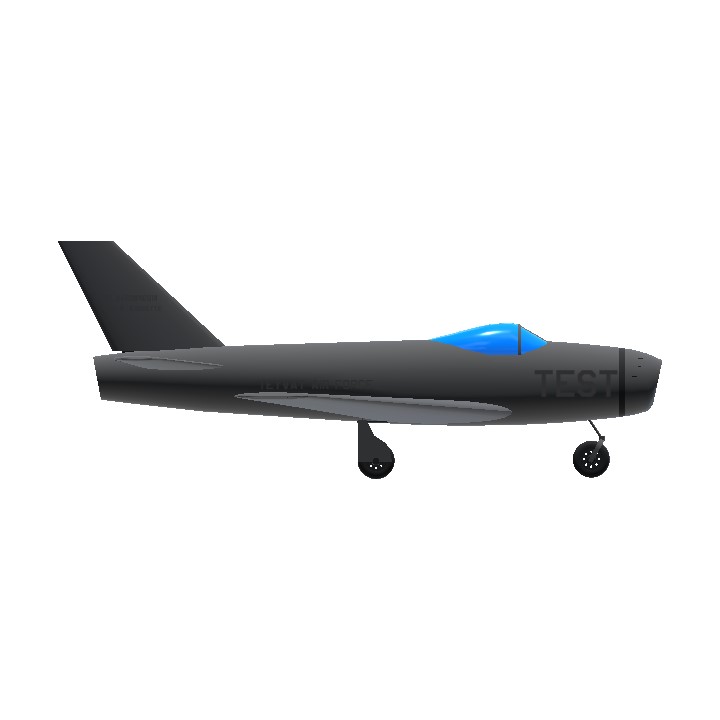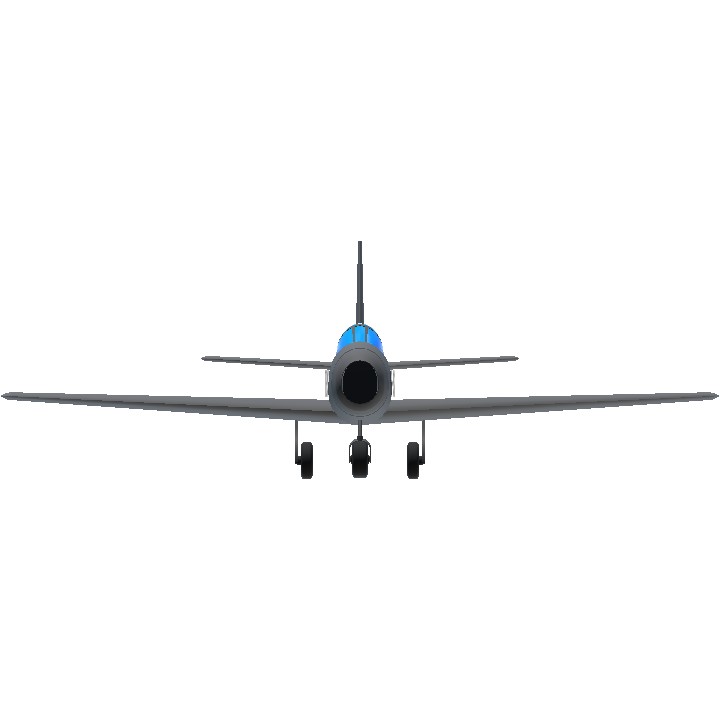The Carid Design No. 250E is a redesign of the mainline type 250 design, departing from its pod-and-boom layout into a conventional one, to accomodate a larger engine producing an output of 32,700 kN and an afterburner. First flown in 1949, it mainly served with the Force 5 and 4 of the Ark's air force until the late 1970s.
Lore
Fontaine has been pondering on improving the base design of the Aircraft 250, which is a pod-and-boom turbine fighter. Existence of its diving capabilities rendered it obsolete as a fighter and excellent as a light attack / CAS meant further redesign of the aircraft's hull to be able to mount an American-made turbojet engine of 33 kN thrust.
In addition to the hull, the wings were swept and the landing gear was revised, and retaining the cockpit position within the body. The nose was reworked as well able to be outfitted by a 20 mm Hispano-Suiza cannon (pod 250's were of 12.7 mm machine guns.)
The resulting design, the 250E fighter and the 250G missile fighter was nicknamed Clervie.
Test flights conducted in 1949 shown the Clervie's flight characteristics significantly improved at all aspects - level flight, turn and roll, and it eliminated much of the precursor's flaws as well.
Moreover in a high-altitude flight, the aircraft broke the speed barrier for the first time, at Mach 1.01 at 9,170 meters above sea level, and later on at mid-1950, Mach 1.14 with an afterburner.
The 250E Clervie was accepted into service by the Force 4 and 5, being one of the prolific squadrons using it is the 5A(A) Automnequi. Fontaine retired the 250E in 1963, and was last used by the Force 4D (Gandha) as a fighter in 1979.
It would have been designated as the Carid (Carmen Dei) Design No. 701 due to its significant departure, however it was decided to group it under the Design No. 250.
Specifications
General Characteristics
- Created On Android
- Wingspan 37.4ft (11.4m)
- Length 31.5ft (9.6m)
- Height 12.4ft (3.8m)
- Empty Weight 6,413lbs (2,909kg)
- Loaded Weight 8,660lbs (3,928kg)
Performance
- Power/Weight Ratio 1.377
- Wing Loading 31.9lbs/ft2 (155.8kg/m2)
- Wing Area 271.4ft2 (25.2m2)
- Drag Points 901
Parts
- Number of Parts 108
- Control Surfaces 7
- Performance Cost 578

